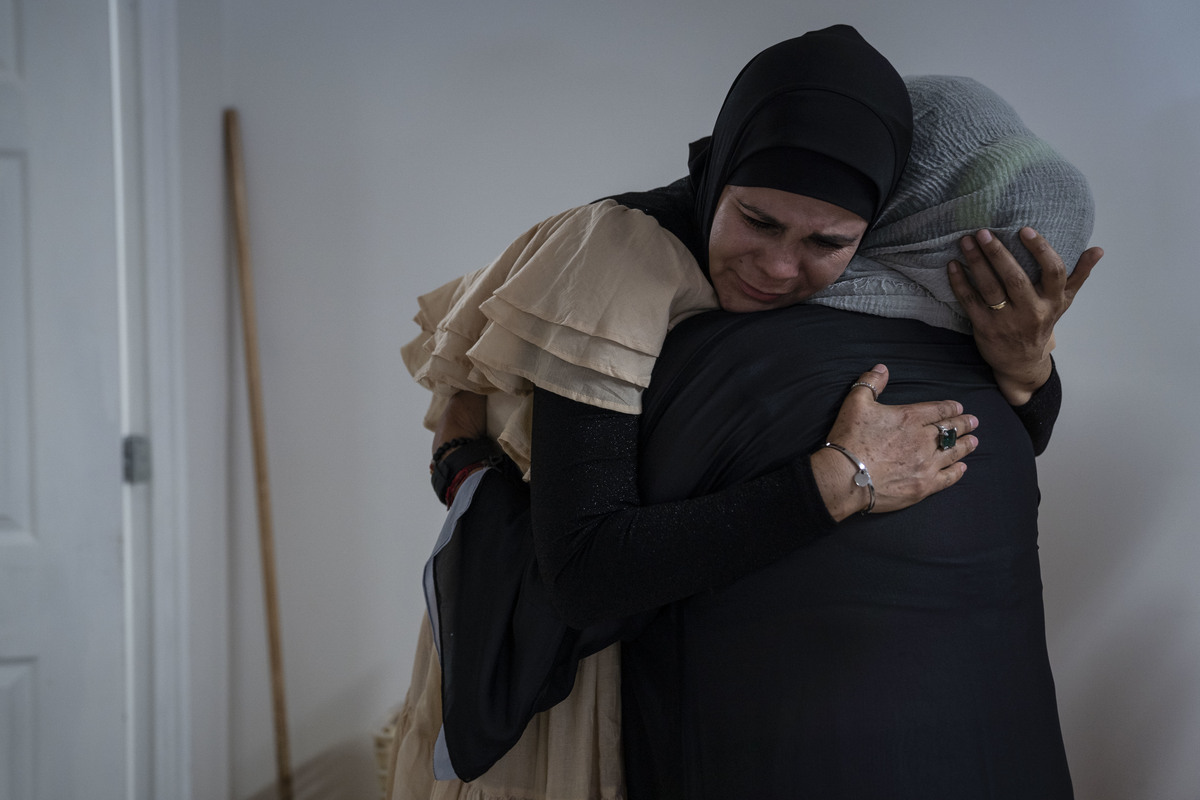
[ad_1]

Sonia García, president of the Latina Muslim Foundation, plays with a cat at the Assabil shelter for Muslim migrants in Tijuana.
Toya Sarno Jordan
hide caption
toggle caption
Toya Sarno Jordan

Sonia García, president of the Latina Muslim Foundation, plays with a cat at the Assabil shelter for Muslim migrants in Tijuana.
Toya Sarno Jordan
TIJUANA, Mexico — Six miles from the U.S.-Mexico border, Muslims gather to pray in an-oud scented musalla. The prayer room sits within a two-story, 8,000 square foot refugee shelter, complete with a minaret and a blue dome.
It’s a beacon for Muslims arriving to the city from all over the world seeking a new life elsewhere.
“When they come here … they feel comfortable,” said Sonia García, president of the Latina Muslim Foundation, the organization that runs the shelter.
The shelter provides a number of services: legal assistance, medical care, language and Quran classes. There are separate quarters for men and women lined with bunk beds. There is also another room to quarantine people when they get sick.
The building was converted from an event space that was once used for quinceañeras and birthday parties. It has a commercial kitchen and a dining area. The musalla where local Muslims and shelter residents worship was once a bar.

A migrant from Guinea, who is currently waiting for his family to arrive in Tijuana, walks up the stairs at the shelter.
Toya Sarno Jordan/NPR
hide caption
toggle caption
Toya Sarno Jordan/NPR

A migrant from Guinea, who is currently waiting for his family to arrive in Tijuana, walks up the stairs at the shelter.
Toya Sarno Jordan/NPR

García greets a woman before Friday prayer.
Toya Sarno Jordan
hide caption
toggle caption
Toya Sarno Jordan

García greets a woman before Friday prayer.
Toya Sarno Jordan
“It used to be a drinking place … We say from haram to halal,” García jokes.
A few years ago, when García was volunteering at another migrant shelter, she noticed women in hijab. That got her thinking about creating a space where Muslims can feel more comfortable. One where they could pray five times a day and be served halal meals.
The women she saw that day were from Somalia. But since the shelter opened in June, García has welcomed people from Yemen, Afghanistan, and Russia.
García says there aren’t a lot of Muslims in Mexico. She estimates there are around 100 in Tijuana and neighboring Rosarito. “It’s enough to know that we’re growing,” she said. García herself converted to Islam from Catholicism.
Mexico is a Christian majority country. According to the 2020 Mexican government census, about 78% of the population identifies as Catholic and 11% as Protestant/Christian Evangelical. Only 0.2% identify with other religions, including Islam.

Fátima Zagada, in charge of the kitchen and cleaning duties, cleans the floor before Friday prayer.
Toya Sarno Jordan
hide caption
toggle caption
Toya Sarno Jordan

Fátima Zagada, in charge of the kitchen and cleaning duties, cleans the floor before Friday prayer.
Toya Sarno Jordan

García, left, attends Friday prayer at the mosque.
Toya Sarno Jordan/NPR
hide caption
toggle caption
Toya Sarno Jordan/NPR

García, left, attends Friday prayer at the mosque.
Toya Sarno Jordan/NPR
While Mexico is predominately Catholic, García says the local community has been receptive to the Muslim shelter. “They respect that we have certain rules – the way we pray, the way we eat, the way we live,” she said.
Many of the people at the shelter left their home countries because of political persecution and war. “They don’t want to leave,” García said. “But if there is something dangerous … they don’t have a choice. They have to leave.”
Some of those who arrive at the shelter are traumatized by what they experienced in their home countries. “Especially the kids,” García said. “When they come here to Mexico, they’re so scared they don’t want to leave the room.”
It can take months to build trust with children. She says some of them refuse to talk and others have anger issues. But she sympathizes with them.
“Imagine hearing bombs, guns every day,” García said.
The shelter provides art classes and psychologists to try to help them cope. Refugees mostly learn about the shelter through word of mouth and social media.
García also talks with the directors of other shelters in Mexico to invite Muslims to come to hers. She tells them, “If you see someone praying on the floor, [who] does not eat pork, who has hijab … send them to us.”
For García, the hope is to make people feel safe and secure during some of the most daunting times of their life.

People attend Friday prayer at the mosque in the Assabil shelter.
Toya Sarno Jordan/NPR
hide caption
toggle caption
Toya Sarno Jordan/NPR

People attend Friday prayer at the mosque in the Assabil shelter.
Toya Sarno Jordan/NPR
[ad_2]
Source link